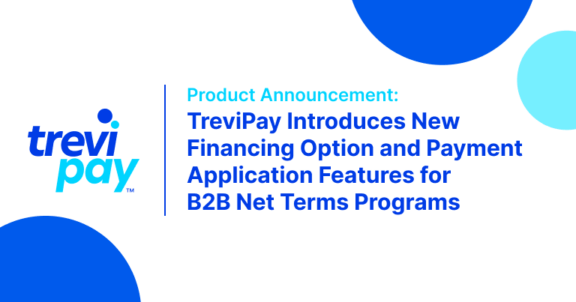News & Insights · Approx. 3 minute read
Offer Online Buyers a Helpful Multichannel Purchasing Experience

The effects of COVID-19 have accelerated the adoption of B2B ecommerce. And today’s B2B buyers are demanding a B2C-like purchasing experience when shopping online. But many manufacturers and distributors have inflexible legacy systems—not to mention strained resources and budgets, limiting their ability to offer a frictionless purchasing experience. To discuss how B2B companies can overcome the obstacles their technology presents to provide their customers a better, B2C-like experience, Digital Commerce 360 B2B spoke with Brandon Spear, president of TreviPay.
DC360: What ecommerce platform trends are currently impacting B2B companies?
Spear: An interest in headless and API-driven ecommerce technology is getting more traction. Headless commerce rethinks the ecommerce platform as a collection of digital services that support commerce versus a sole solution. It separates templating, presentation and interactive layers of the customer experience from order management, product information management systems and payment acquisition. When these are separated, businesses can focus on resources to better meet consumers’ needs without impacting critical systems of record, like product databases or payments. When B2B companies are considering which payment options to offer, it’s important to consider credit and payments technology that doesn’t require a change of internal processes and supports an API-driven approach. Additionally, the re-emergence of B2B marketplaces is fueled by more dynamic buyer tools, evolving buyer behavior and the volume of new vendors and brands. Analysts predict modern marketplaces will continue to multiply and offer more end-to-end digital buying experiences.
DC360: What ecommerce payment challenges do B2B companies face?
Spear: The Amazon effect has led B2B buyers to expect a B2C experience. Marketplace and ecommerce sellers who make the right adjustments can sweep the competition, while increasing loyalty and market share. According to a 2019 survey of B2B buyers by TreviPay, three out of four B2B buyers say they would switch to a competitor for a better buying experience. Almost half said they haven’t completed a purchase for their company because their preferred payment method wasn’t an option. Additionally, credit card payments give buyers less buying power than net terms. Terms allow buyers to make larger purchases up front and help them launch their own products sooner. Most B2B buyers said they prefer vendors that offer net term options at checkout because it increases their buying power by reducing the required payment upfront.
DC360: What strategies can B2B companies implement to overcome these obstacles?
Spear: First, they should understand that they aren’t alone. And that there are technology providers, such as TreviPay, that can help—and can work within the constraints of legacy software rather than start over from scratch. B2B companies should consider the benefits of taking a buyer and seller experience-driven approach. Sellers can’t offer a seamless customer experience if their back-end processes are clunky. The right technology partner can help them provide the payment experience–including purchase controls, payment terms and consolidated invoicing— consistent across all sales channels, including marketplaces.
Stay up-to-date with the latest from TreviPay
Thank you for subscribing! You will now receive email updates from TreviPay.



